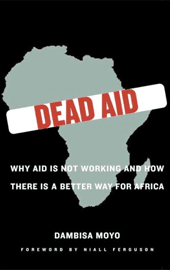
Accessing markets and attracting investment requires basic infrastructure like roads, electricity, clean water and technological capacity, as well as a healthy population. The progress sub-Saharan Africa needs in order to attain economic growth will require a significant increase in aid, not a reduction.

Between 19, 34 million more African children went to school for the first time.Īll of these successes are directly attributable to a combination of increasingly effective aid, improved African governance, targeted debt relief and the hard work of people in Africa.ĭevelopment assistance is not a panacea, but targeted, smart aid has a positive role to play in promoting development in the poorest countries-especially during a struggling global economy-alongside other prerequisites for progress: trade, private investment and improved governance.Between 20, malaria cases and deaths in Rwanda and Ethiopia were more than halved thanks to a dramatic increase in bed nets and access to anti-malaria medication.In 2007 alone, more than 2 million Africans were receiving life-saving AIDS treatment, up from only 50,000 in 2002.Here are the facts on the aid Moyo claims has not worked: One of Moyo’s most puzzling choices in Dead Aid is her portrayal of all aid as coming in the form of direct cash to governments-or “government to government aid.” In doing so, Moyo glosses over one of the most prominent forms of aid: health and humanitarian aid, including medicine, equipment support and health infrastructure, which has made a big impact in the lives of Africans. AIDS funding (PEPFAR) goes to abstinence programs, when in fact, only 7 percent of all PEPFAR funding for focus-countries in 2008 was earmarked for abstinence and “be faithful” programs. Without citing sources she makes inaccurate claims, such as asserting that two-thirds of U.S. Moyo bases her argument on incorrect and undocumented facts while failing to differentiate between different types of aid.


The book’s concept-that aid to Africa has not worked-is nothing new. Health care workers are forced to decide who lives and who dies for lack of pills that cost less than 50 cents a day. Even at current assistance levels, there is not enough AIDS medicine for everyone who needs it in Africa. But many of Moyo’s claims do not hold up, and her proposal to cut off aid to Africa would quite literally lead to the deaths of millions of Africans. It’s a provocative book, with relevant points about the need for greater trade and investment, two things we support and have worked for several years to increase.


 0 kommentar(er)
0 kommentar(er)
